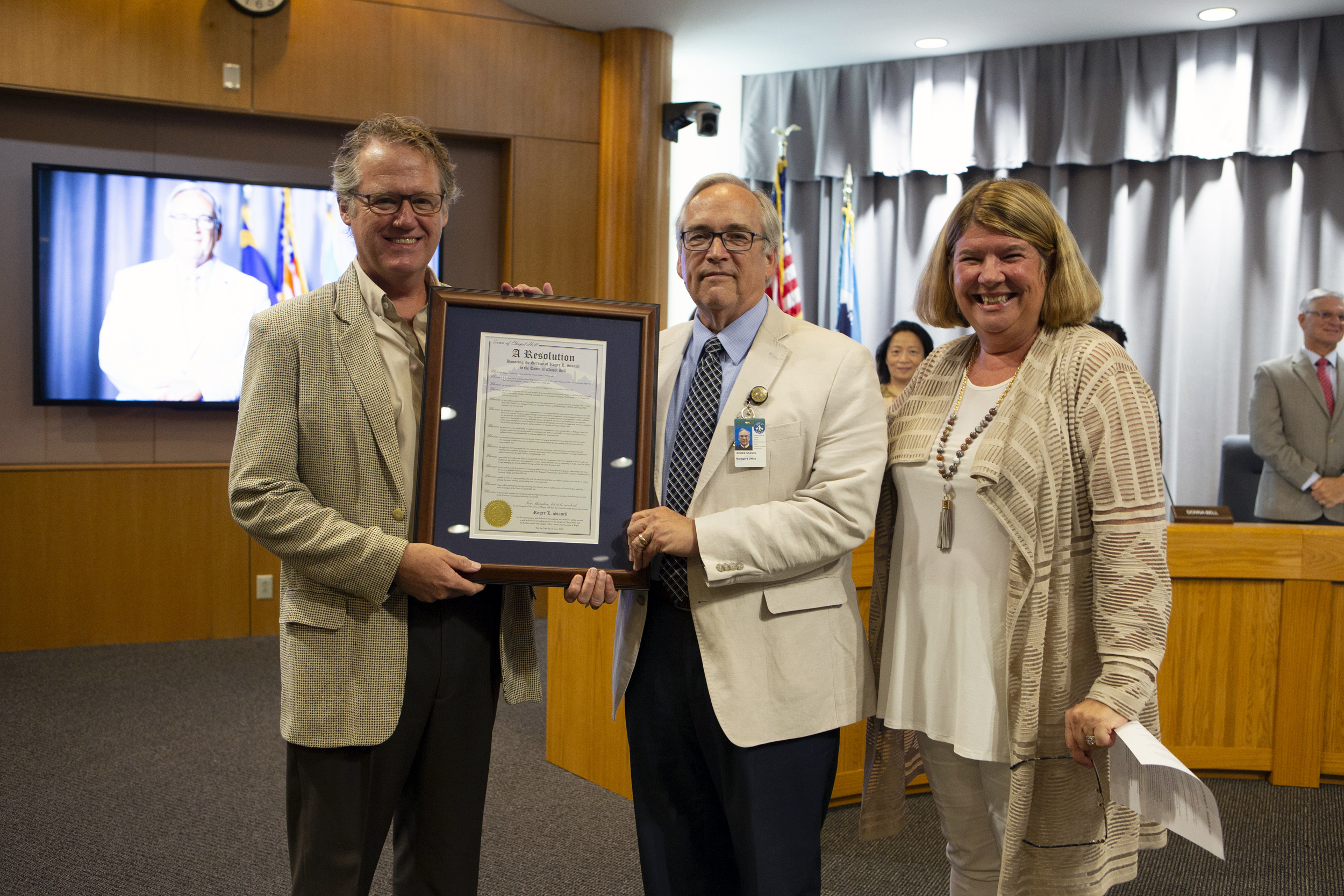
This is a blog series about “Leading Culture” by Rae Buckley and Lindsey Bineau, with the expertise of retired Chapel Hill, NC Town Manager, Roger Stancil. Read all installments as they’re published online here. Today’s introduction post is by Rae Buckley.
“We tend not to examine assumptions once we have made them but to take them for granted, and we tend not to discuss them, which makes them seemingly unconscious.” – Edgar Schein
Employees within an organization often come to share common ways of looking at their professional world. This shared understanding of professional norms is known as organizational culture.
Edgar Schein theorized that there are three layers of organizational culture that interact with one another: basic assumptions, values and beliefs, and artifacts. Basic assumptions, found in the deepest level of culture, “capture fundamental notions of how the organization and its members relate to the environment, time, space, reality and each other. Basic assumptions are taken for granted and lie below the level of consciousness for most of the organization.” The other two levels, values and beliefs and artifacts, are more transparent.
We asked Roger Stancil about the basic assumptions he observed when he first started managing the Town of Chapel Hill. On his first day as Town manager, Roger found an organization that was in great shape, so the task was not to “fix” a problem, but rather to change the organizational culture to meet the elected body’s interests.
Since Council was primarily focused on its relationship with department heads, Roger’s first step was learning about the culture of his leadership team. When we asked Roger how he came to understand the basic assumptions of his leadership team, he answered that “their behavior reflected their assumptions.”
Roger observed two specific clues to understanding the basic assumptions of the Town’s leadership team: the physical arrangement of employees at meetings and the use of food as a professional gathering tool.
Roger relayed a story about the meetings he attended at the beginning of his tenure as Town Manager. Department heads had unofficially assigned themselves the seats they sat in during every meeting.
Roger said “I remember coming into my first department head meeting and they said ‘that’s your seat down there. That’s where the boss sits.’ And I said ‘oh, no, no, wherever I sit is where the boss sits. So it doesn’t matter where I sit!’”
The department heads had created a climate that emphasized orderliness and routine. When Roger acted against their basic assumptions by sitting in an unexpected seat, employees quickly tried to reframe his actions to align with organizational norms.
Thereafter, Roger proceeded to sit in different places at each meeting and made a mental note of how difficult it was for the department heads to adjust to changing seats around the table.
Roger noticed that another basic assumption in the organization was a directive approach to leadership. He reflected on the fact that even after initial welcome-to-town lunches, department heads wanted to have lunch with him on a frequent basis.
During lunch they would ask for directions. Then, during a meeting with the newly-appointed police chief, the Chief asked Roger for his “list” and Roger asked, “What list?” The Chief replied, “The list of things I’m supposed to do. They told me that’s how it works.”
These events revealed basic assumptions within the organization about leadership and decision making. Namely, Roger observed an imbedded sense of hierarchy and an organizational assumption that it was Roger’s job to issue directions and the department head’s job to execute.
It takes time to understand an organization’s basic assumptions, but it is critically important to understanding an organization as a whole. Over the next 12 years, Roger used the more visible aspects of the Town’s culture to work through cultural change, encouraging employees to be innovative and collaborative.
This ultimately led to changes in the underlying assumptions of his leadership team. Today, Chapel Hill’s leadership expectation is that employees are empowered to lead from wherever they are (no matter what seat they choose to sit in!).
Sources:
- Schein, Edgar. “Defining Organizational Culture,” in Shafrtiz, Jay M Jr, J. Steven ott, Yong Suk Jang, Classics of Organization Theory, 364.
- Khademian, Anne M. “Culture as a Management Tool.” Working with Culture: The Way the Job Gets Done in Public Programs. Washington, D.C.: CQ Press, 2002, 18.
